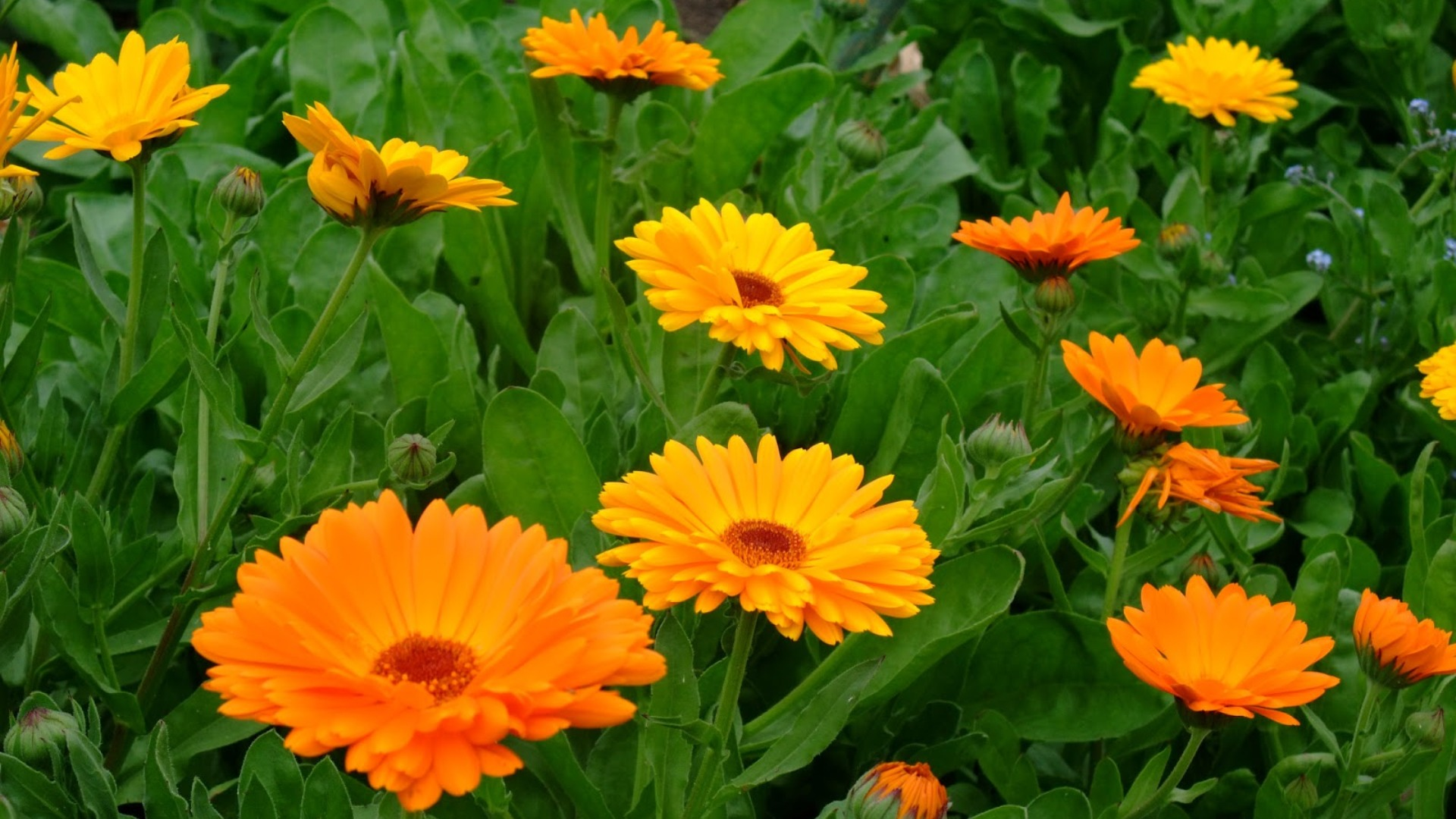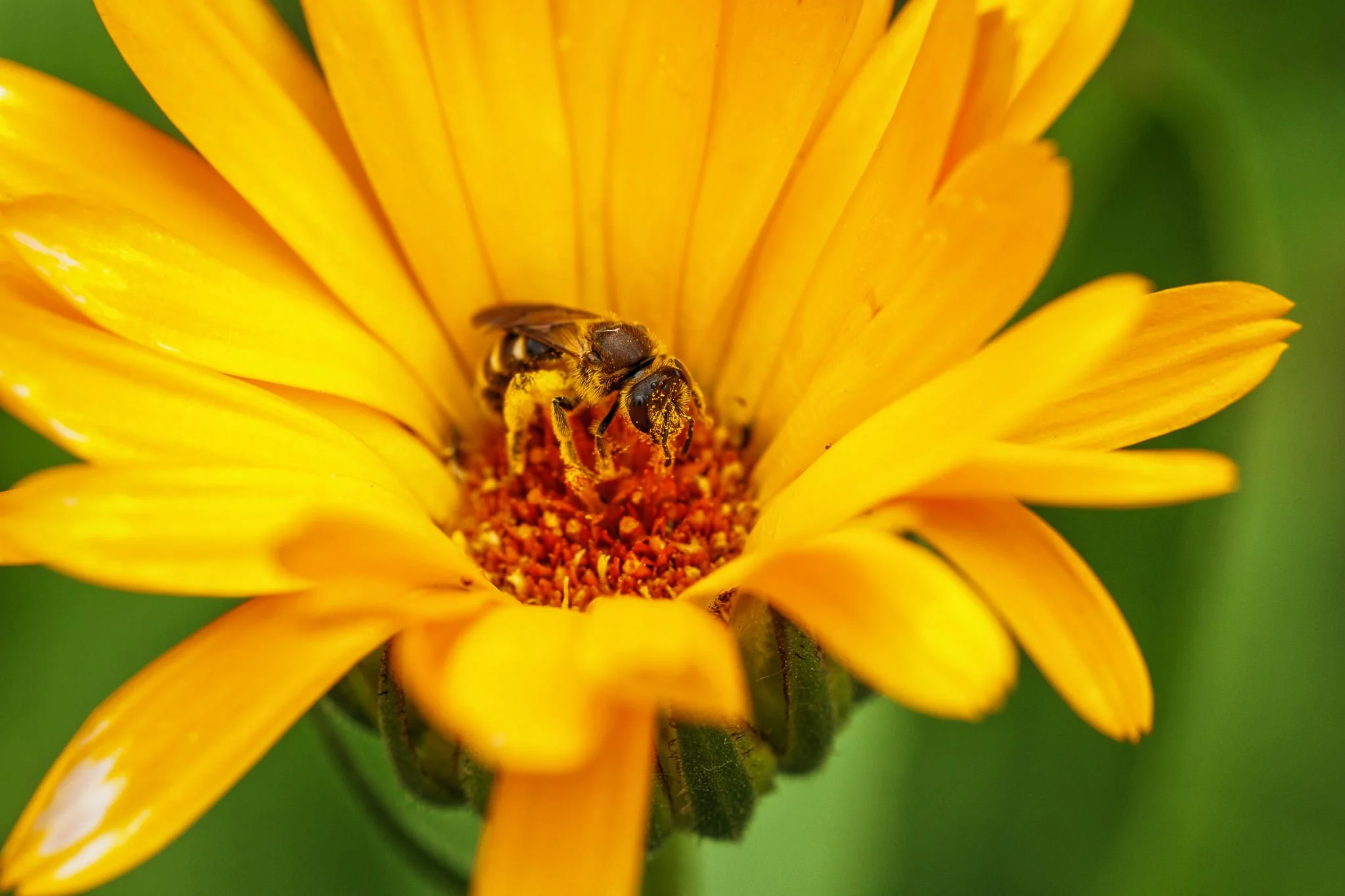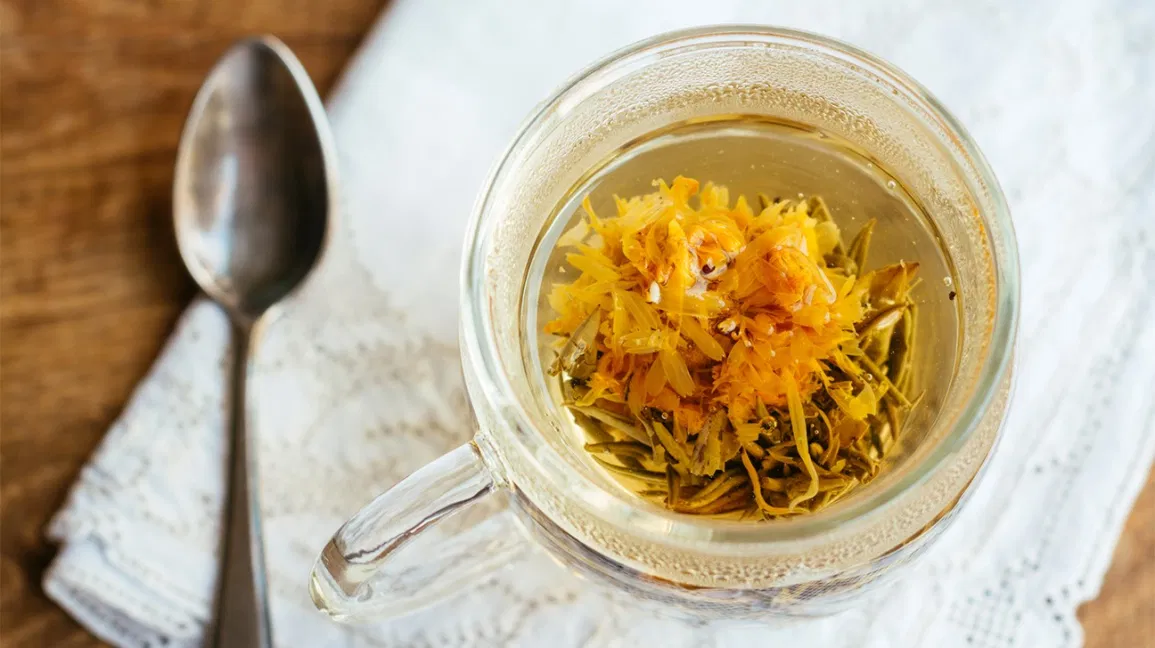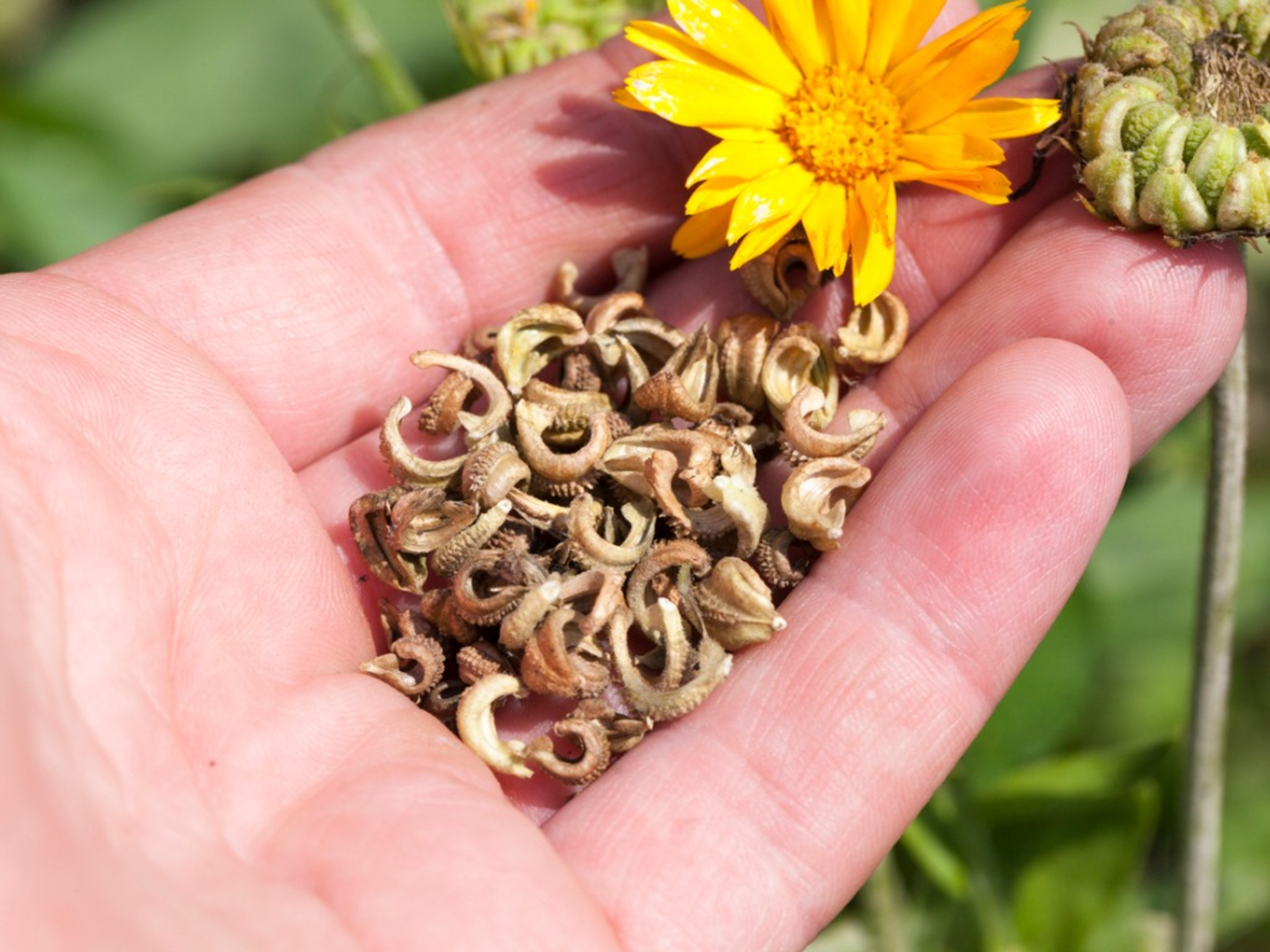
Note: This herb (pot marigold) is not related to common garden marigolds, which go by the Latin name Tagetes. Calendula officinalis, written about here, is edible and medicinal, while Tagetes varieties can be toxic to ingest.
Overall, this herb can help reduce garden maintenance while yielding an abundance of useful flowers. Here are seven reasons to grow it.
1: Calendula Protects Soil
This flower grows especially well in the cooler seasons of spring and fall, though it grows all summer long in mild climates, too. Since it has thick, fibrous roots and grows in thick patches, it can be used as a cover crop or as a living mulch to protect the soil.
Sow seeds mid-summer for a fall cover crop that protects soil throughout the winter. Or sow seeds in the fall for a spring cover crop/mulch.
It grows thickly and then dies back on its own. When it does, it enriches the soil with biomass. Or you can simply pull it in time for planting and compost it. Personally, I leave it planted on the perimeter of my crops as a trap crop.
A thick crop of calendula can also be used as a cut flower. The bouquets are a beautiful sight!
2: Repels Pests
One late summer a few years ago I noticed the stems of my pot marigold plants covered in aphids. I was alarmed and naturally worried that the aphids would be attracted to the crops around them. When I inspected the crops, I couldn’t find a single aphid—they were all on the calendula!
This herb truly lives up to its reputation as a trap crop—”trapping” pests such as aphids, whiteflies, and thrips by exuding a sticky sap (resin) that they find more appealing and delicious than nearby crops.

3: Calendula Attracts Beneficial Insects
The flowers provide nectar and pollen that attract pollinators such as bees and butterflies. The nectar—along with the pests that it traps—attracts beneficial insects such as ladybugs, hoverflies, and lacewings.
These beneficial insects even stay to mate, increasing the number of beneficials in the ecosystem! (They will mate and stick around where there is abundant food.) As a matter of curiosity, did you know that ladybug mating can last up to two hours???
4: Enhances Fruit Tree Guilds
For all of the reasons mentioned above, calendula is an excellent multi-functional plant for the permaculture garden. In fact, Gaia’s Garden suggests using it in fruit tree guilds and food forests.
5: Calendula Dazzles the Edible Landscape
Rosalind Creasy, in Edible Landscaping, encourages the use of pot marigold in the edible landscape because it brings such a bright, cheery flash of color. I’ve used it for years in my landscape, and I love that it is both beautiful and low-maintenance.
6: Aids Healing
This flower has powerful anti-inflammatory, anti-viral, and anti-bacterial properties, and is often used to soothe a long list of skin ailments including—but not limited to—cuts, scrapes, bruises, bee stings, insect bites, fungal infections, eczema, and rashes.
That’s why I use the flower petals to make healing calendula oil, soothing salve, and in hypo-allergenic personal care products like soap, lotion, and body butter for sensitive skin.
According to The Backyard Homestead, the petals, easily dried and stored, make a delicious medicinal tea.
The Herbal Academy shares 14 other medicinal remedies using calendula.
If you can’t grow as much calendula as you would like, you can buy dried calendula flowers for your medicinal and culinary needs.

7: Calendula Adds Color to Culinary Creations
The cheerful flower petals—fresh or dried—can brighten up salads, cream cheese, or cooked vegetables.
According to Homegrown Herbs, the petals are also used as a natural food coloring for common foods such as cake frosting or broth. They can substitute for high-priced saffron to make golden-colored rice.

How to Grow Pot Marigold
This herb is a self-sowing annual that grows in USDA zones 3-9. I collect dried seed heads each season so I always have a supply of seeds!
Resina calendula is a variety of Calendula officinalis which is known to have the most potent amounts of medicinal resin and is grown specifically for medicinal purposes.
If your goal is something other than medicinal (attracting pollinators, repelling pests, etc.), then any variety of Calendula officinalis will be fine.
I like the Pacific Beauty Calendula Seed Mix by Seeds Needs, as well as the organic Resina Calendula (Pot Marigold) Seeds from Botanical Interests.
Sow seeds any time by scattering them on top of the soil and watering them well.






